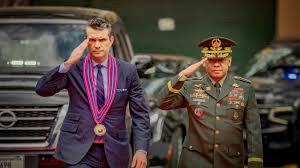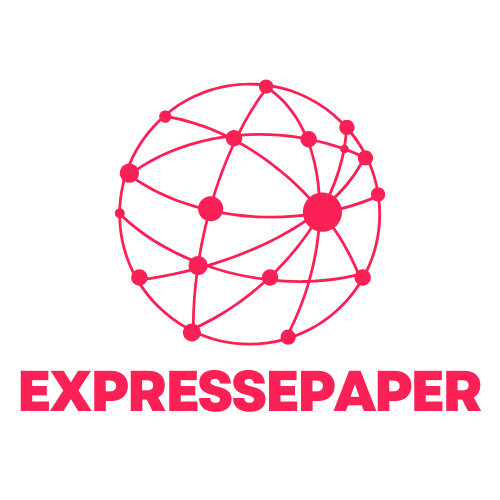- Key Points
- U.S. Defense Secretary Pete Hegseth described Japan on Sunday as indispensable for tackling Chinese aggression and said implementation of a plan to upgrade the U.S military command in the country would get underway.
- Calling Japan a “cornerstone of peace and security in the Indo-Pacific”, he said President Donald Trump’s government would continue to work closely with its key Asian ally.
- It comes as Japan doubles military spending, including money to purchase longer-range missiles.

MANILA, PHILIPPINES – MARCH 28: U.S. Defense Secretary Pete Hegseth (L), with Chief of Staff of the Armed Forces of the Philippines General Romeo Brawner Jr., inspect honor guards during his visit to Camp Aguinaldo on March 28, 2025, in Quezon City, Metro Manila, Philippines. U.S. Defense Secretary Pete Hegseth is in the Philippines, focusing on strengthening security cooperation and addressing concerns in the South China Sea. (Photo by Ezra Acayan/Getty Images)
U.S. Defense Secretary Pete Hegseth described Japan on Sunday as integral for tackling Chinese aggression and said enforcing a plan to upgrade the U.S. Navy command in the United States might get beneath manner.
“We percentage a warrior ethos that defines our forces,” Hegseth informed Japanese Defence Minister Gen Nakatani at a meeting in Tokyo. He said, “Japan is our critical partner in deterring communist Chinese military aggression,” bringing up that this partnership extends throughout the Taiwan Strait. Calling Japan a “cornerstone of peace and protection within the Indo-Pacific,” he stated that President Donald Trump’s government would continue to work closely with its key Asian ally.
In July, then-President Joe Biden’s White House announced a major revamp of the U.S. Military command in Japan to deepen coordination with Tokyo’s forces, as the 2 nations labelled China their “finest strategic task.”
That trade will locate a combined operational commander in Japan, who would be a counterpart to the head of a joint operation command established by using Japan’s Self-Defense Forces last week.
Troops in Japan
Hegseth’s reward of Japan contrasts with the grievance he levelled at European allies in February, telling them they have to now not count on the U.S. Presence there could close forever. Trump has complained that the bilateral defence treaty, in which Washington pledges to defend Tokyo, is not reciprocal. In his first term, he said Japan has to pay extra to host U.S. Troops.#
Japan hosts 50,000 U.S. Military employees, squadrons of fighter jets, and Washington’s simplest forward-deployed plane service strike institution along a 3,000-km (1,900-mile) East Asian archipelago that hems in Chinese army power.
It comes as Japan doubles military spending, which includes cash to buy longer-range missiles. The operational scope of its forces, however, is restricted by way of its U.S.-authored constitution, adopted after its World War Two defeat, which renounces the proper to make war.

TOKYO, JAPAN – MARCH 30: Minister of Defense of Japan Gen Nakatani, left, and U.S. Defense Secretary Pete Hegseth, right, review an honor guard during a welcome ceremony at the Ministry of Defense on March 30, 2025 in Tokyo, Japan. U.S. Defense Secretary Pete Hegseth is visiting Japan to participate in a Japan-U.S. joint memorial ceremony on Iwo Jima (Iwoto) commemorating the 80th anniversary of World War II’s end and to discuss strengthening bilateral security cooperation. (Photo by Kiyoshi Ota/Pool – Getty Images)
Hegseth and Nakatani agreed to boost a plan to together produce beyond-visible-range air-to-air AMRAAM missiles and to consider taking part in the production of SM-6 floor-to-air defence missiles to help ease a shortage of munitions, Nakatani said.
Hegseth said he requested his counterpart for extra get right of entry to to Japan’s strategic southwest islands, alongside the threshold of the contested East China Sea close to Taiwan.
A request for explanation became made, however, the Chinese overseas ministry did no longer without delay reply.
Signal chat
Hegseth, on his first official visit to Asia, travelled to Japan from the Philippines. On Saturday, he attended a memorial service on Iwo Jima, the site 80 years ago of fierce fighting between U.S. and Japanese forces.
His trip has been overshadowed by revelations he texted the details of imminent U.S. strikes on Yemen on a Signal messaging app group that included Jeffrey Goldberg, editor-in-chief of the Atlantic magazine, along with Director of National Intelligence Tulsi Gabbard, CIA Director John Ratcliffe, National Security Adviser Mike Waltz and The Atlantic’s editor-in-chief Jeffrey Goldberg.
Hegseth on Sunday did not respond to a shouted question about whether he had posted classified information to the group.
Gabbard told Congress on Tuesday that the Defense Secretary would be the one to determine what defense information is classified.
